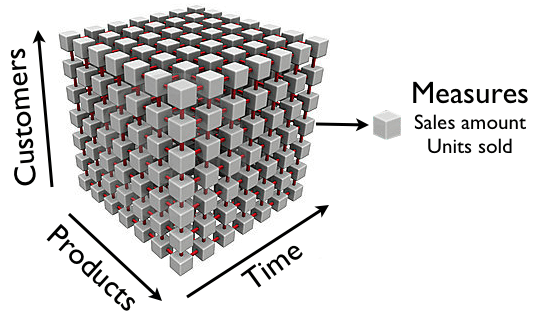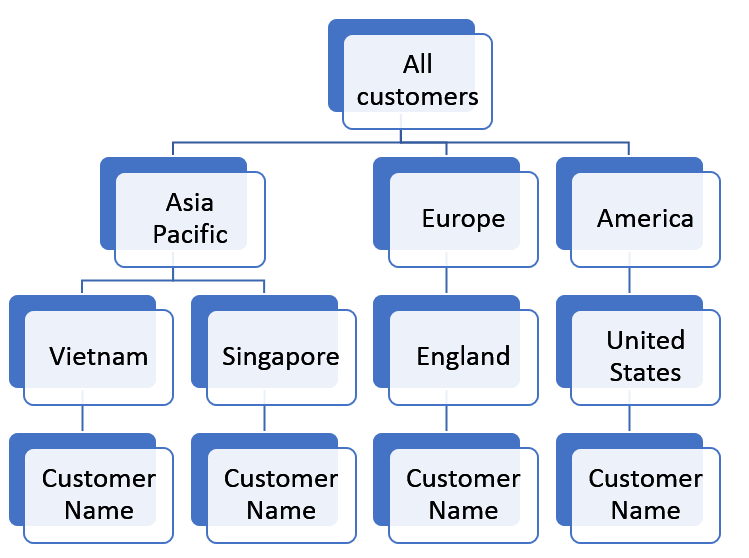The hospitality sector serves millions of customers every day. Each of them checks in and out with his or her own expectation. Some only need to have a room to stay during a business trip but some other customers also demand other services and spend thousands of dollars on restaurants, dining, entertainment, sports, and spa treatments.
The ability to manage those personal preferences and provide available services and rooms to make customers happy is a key factor to stay ahead of the competition.
Big data in the hotel industry
In order to manage personalised experience, the hospitality industry needs advanced data analytics solution. Customers leave a huge amount of data behind after every check-in and check-out. It is not only personal and contact information but also about the kinds of services they used, the kinds of foods they ordered, the facilities such as meeting rooms, tennis courts and swimming pool they booked.
These data sets are multiplied by tens or hundreds of entities owned by the corporation. The era of paper records is long gone. Everything now has to run digitally and be put into databases. In order to meet these new requirements, databases should be designed to be fast, efficient, and easy to maintain.
Read more: How Data Analytics is changing hotel revenue management
Big Data requires new technology
The relational database management system has limitations
The common database system is relational database management systems (DBMS). The traditional technique of entity-relationship (E-R) modelling and structuring a chain of tables is very popular to database administrators or designers. However, it has become obsolete and inefficient when running queries at the scale of a large hospitality corporation.
SQL queries often consist of joining relationships between tables and they are re-executed and indexed every time it is called which very likely results in a performance hit when it comes millions of data rows.
Moreover, when needed, these queries need to be programmed by IT department whose strength is not often data processing. The rate of failure is very high when they are deployed in the live environment. Otherwise, corporations need to hire in-house IT professionals in data processing which increases cost or outsource to third-party professional service for data development which slows down the response to management's needs.
Infographic: 4 Steps to Automate Enterprise Data Management
OLAP is the way to go
Conversely, On-Line Analytical Processing (OLAP) technology, one of the kinds of multi-dimensional database, represents data in a hypercube, where data is stored in a single cell which is accessible by multiple dimensions. A cube can be demonstrated as below.

The cube above consists of three dimensions Customers, Products, Time. Every dimension has all of its similar information lined up (customers name, product name and time of order) and every cell (units sold) is a unique combination of the elements in dimensions. In OLAP, all the dimensions are combined together by design so there is:
- no table relationship or constraint required
- much lower chance of a performance hit. As there is no table join to process, a simple "query" in OLAP quickly takes an according cell and returns its result. This would result in a big performance boost in an environment with a huge amount of transactions.
- quick data roll up. A dimension can be designed as a hierarchy as below

As demonstrated, Units sold by customers can be quickly rolled up the upper level based on management's requirements. For example, if Vietnam and Singapore recorded units sold of 100,000 and 150,000 items accordingly, Asia Pacific would automatically get 250,000 items when queried.
Read more: Winning the guest in the age of Hospitality Personalisation
Advantages of multi-dimensional database design
- Data presentation: raw data from the multi-dimensional database can be exported in datasheet view, and be presented on familiar Spreadsheet applications like Excel. This view would require complex SQL programming to generate and it is obviously not the suitable tool for end-user.

- Easy maintenance: Unlike relational database system, which would require complex SQL table joining and indexing when management needs more dimensions for analysis, multi-dimensional databases, especially Infor BI platform, provide the capability to add and drop dimensions on-the-fly. The maintenance is so easy that no data specialist is required.
- High performance: data in OLAP database is stored the way it is viewed so there is no overhead of table join to compute when performing the query. There might be a little to no difference in speed to the relational system in small-scaled transactional volumes but the performance impact would be very noticeable when it comes the level of data amount in the hospitality
OLAP in Infor d/EPM
What is d/EPM?
Infor d/EPM is an application designed to work for controllers and CFOs at the corporate level with tens to hundreds of entities underneath. The application can be used in various industries such as banking, insurance, and especially hospitality as these modules are configured to meet the industry-standards in:
- Management Reports
- Budgeting and Planning
- Capex and Workforce
- Financial Consolidation
Infor BI platform
Infor d/EPM is based on Infor BI, a platform developed by Infor using OLAP technology from scratch.
Infor BI hides the technology under the hood and provides a bunch of user-friendly applications to IT administrators for full control and customisation of data and reporting on the interface level. By utilising Infor BI with OLAP built-in, an IT administrator can:
- design and organise a dimension into any hierarchy based on organisational's management structure,
- customise data cube based on organisational's management structure,
- and query data from data cube using Excel-like formula without any complex programming required.
Big data and managing big data in the hotel industry is no doubt the new future that every corporation needs to face in order to provide personalised services to customers, improve customer satisfaction, and stay competitive.
Because of the exponential growth in volume, velocity, and variety of data in the hospitality industry, the technology behind it needs to be both fast and user-friendly. Multi-dimensional database, or OLAP is obviously the way to go with.Infor BI and Infor d/EPM are designed with these goals from the ground up and also offer financial controllers and CFOs powerful features to handle finance at the corporate level that will be addressed in the upcoming blog posts.
You can also request an Infor d/EPM demo today and see what it can do for your business.
 English
English  Vietnamese
Vietnamese 


